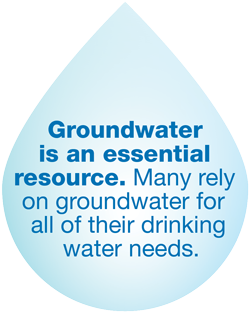
What is a water footprint?

A water footprint measures the amount of fresh water consumption. This could be consumption by an individual, a business, an industry - any person or process that uses water.
It can help reveal water use patterns and assess the amount of water used for activities ranging from brushing one's teeth (direct water - you turn on a faucet or hose and water is used directly) to how much fresh water is used to produce a cup of coffee or a pair of jeans (indirect or virtual water - water that is used to produce, grow or manufacture every day items).
Since fresh water is a valuable, finite resource, a water footprint helps identify how and where water consumption can be reduced and promote innovative thinking to come up with alternate means to reducing a water footprint.
The water footprint consists of three components: the blue, green and grey water.
Blue water is surface and groundwater (ex: lakes, rivers and aquifers)
Blue water footprint is the amount of surface water and groundwater required (evaporated or used directly) to produce an item. *
Green water is the precipitation (ex: rain, snow) that is stored in the soil or temporarily stays on top of the soil or vegetation. Eventually, the water evaporates or transpires through plants.
Green water footprint is the amount of rainwater required (evaporated or used directly) to make an item. *
Grey water is water polluted by the production of goods and services.
Grey water footprint is the amount of freshwater required to dilute the wastewater generated in manufacturing, in order to maintain water quality, as determined by local and federal standards. *
*From https://www.watercalculator.org/footprint/what-is-a-water-footprint/
Water isn't just for drinking
Many of us use water daily to prepare our meals. However, you may be surprised to learn how much water is needed to produce the very food you're preparing. Did you know on average it takes 371 litres (98 gallons) to produce four ounces of eggs or chicken?
Interested in learning how much water is needed to produce some of your favourite foods? Check it out at www.watercalculator.org/water-footprints-101/water-in-your-food/ and www.waterfootprint.org/resources/interactive-tools/product-gallery/
Water is also needed to produce goods. Denim is typically made from cotton. Cotton needs a lot of water to grow. Combine that with the manufacturing process and it results in approximately 5,700 to 6,800 litres (1,500 to 1,800 gallons) of water to produce a single pair of jeans... and that doesn't include washing them once you own them!
Learn more about how much water is takes to produce various goods at
www.watercalculator.org/water-footprints-101/water-in-the-things-you-buy/


